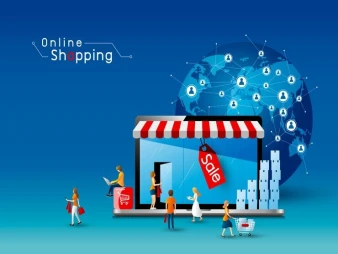Free support 24/7
Free support 24/7

The power of emojis in marketing
Emoji are emoticons that are used to communicate and interact over the internet and social media. Emojis include smiling, sad, angry, surprised, and other emoticons, as well as different shapes of animals, plants, foods, sports, flags, and other symbols. Emojis are used to add a personal and emotional touch to text messages, and to promote understanding and harmony between sender and receiver.
But did you know that emoji also have great marketing power? Yes, emoji can help you capture your customers' attention and increase their engagement with your brand. How is that? In this article, we will explain to you what emoji are, the importance of using them in building an emotional connection with your audience, and how to use them efficiently in your marketing campaigns via social media, email, or replying to messages. We will also mention some of the controls and disadvantages that must be taken into account when using emoji in marketing. Are you ready to harness the power of emojis in marketing? Then follow along!
What are emojis?
Emoji is a Japanese word meaning “picture of a character” or “picture of a symbol,” and it is an emoji that is used to communicate and interact through the internet and social media. Emoji include human faces, as well as different shapes of animals, plants, foods, sports, flags, and other symbols.
The emoji was first created in Japan in the late 1990s by Shigetaka Kurita, who was part of the staff of a Japanese telecom company called NTT DoCoMo. Coretta's goal was to make electronic communication via mobile text easier, and to add some fun and liveliness to conversations. Kurita drew inspiration from Japanese anime and manga, and street signs that use simple symbols to convey meaning.
At the beginning of its appearance, the emoji were limited in their number, size, and accuracy, as they consisted of only 12 x 12 pixels, and their number was only 176 symbols. But with the development of technology and the increase in the popularity of emoji, their number, variety, and quality increased, until they included thousands of emoji in different colors and shapes.
What is the importance of emoji in marketing?
Emoji have great power in marketing, as they help attract customers' attention and increase their engagement with your brand. Emoji add a personal and emotional touch to your marketing messages, enhancing understanding and harmony between you and your audience. It also helps add some fun and creativity to your marketing content, and simplifies a lot of words.
There are many studies confirming the effectiveness of using emoji in marketing. For example, a study conducted by Leanplum showed that the use of emoji in email addresses increases the rate of opening messages by 66%, and using them in SMS messages increases the rate of engagement by 254%.
Another study by Zazzle Media showed that using emoji in social media posts increases engagement rate by 25.4% and lowers cost of engagement by 22.2%.
In 2015, the Oxford English Dictionary chose the word "emoji" as its word of the year, expressing the word's influence on popular culture. The Oxford Dictionary also noted an increase in the use of the word “emoji” during 2015, and indicated that the most used emoji across the world was the “smiling emoji with tears of joy.”
How to use emoji in marketing
The use of emoji in marketing requires taking into account some factors and controls, so that your marketing message does not lose its credibility or cause misunderstanding or rejection by the public. Here are some tips and advice to use emoji in marketing effectively and appropriately:
- Choose the appropriate emoji for your business and customer segment. Don't use emoji randomly or unintentionally, as this can create a negative or unprofessional impression of your brand. Make sure that the emoji is consistent with the nature of your business, your marketing goal, and your brand's personality. Also, make sure that the emoji is appropriate for your customer segment in terms of age, gender, culture, and interests.
- Use emoji moderately and balanced. Don't overcrowd your marketing message with emojis or annoying ones, as this can distract the customer or weaken the impact of the message. Use emoji in a way that adds a touch of fun, enthusiasm, and friendliness, without losing the content's seriousness or value.
- Test the emoji before using it. The way emoji is displayed may differ on different platforms, devices and software used. Therefore, before you send a marketing message that contains emoji, make sure that it will appear correctly and clearly to the customer, and that it will not turn into an incomprehensible or corrupted symbol. Also, test the customer's reaction to your emoji, measure the level of engagement and engagement you achieve, and improve your emoji usage strategy based on the results of the experiments.
- Get creative with emojis. Don't just use familiar or outdated emoji, experiment with new or different emoji, or create combinations of emoji that express your message in a unique and attractive way. You can also use emoji to create innovative marketing content, such as stories, puzzles, or contests that use emoji instead of words, and motivate the customer to participate and interact.
Examples of emoji use in marketing
There are many examples of using emoji in marketing successfully and effectively, and here are some of them:
Domino's Pizza: This company used the emoji to facilitate ordering pizza via Twitter, where all the customer has to do is register his account on the Domino's website, save his favorite order, and send a tweet containing the pizza emoji to the Domino's account, and his order will be confirmed and sent to his address. This method made ordering pizza easier, faster and more fun.
General Electric: This company used the emoji
To launch a marketing campaign aimed at attracting the attention of youth and students to STEM fields. She created Snapchat conversations that used emoji to explain complex scientific concepts in a simple and interesting way. It also created a customer update contest to guess the equations that use emojis instead of numbers and letters. This campaign has been very successful in increasing interaction and engagement with GE.
Dudel: This company used emoji to launch a new service that allows customers to book domains that use emoji instead of letters. So, she created a promotional video using emojis to explain the idea of her service in an innovative and unconventional way. She also created an Instagram account that uses emoji to showcase the top sites that use emoji domains. This campaign demonstrated Dadel's ability to keep pace with changes and innovations in the world of technology.
Emojis: How to use emojis in marketing
Emoticons or emoji are small images used to express feelings, ideas, or concepts in a simple and visual way. Emoji are an effective means of communication in the age of the Internet and technology, as they help improve understanding of written content and increase interaction and attraction. Emoji are also a powerful marketing tool, as they help capture your customer's attention, build an emotional connection with them, and differentiate your brand from competitors.
The concept of emoji and the difference between them and expressions of emotion
Emojis are small images used to express feelings, ideas, or concepts in a simple and visual way. Emoji is a Japanese word made up of e (絵) meaning picture and moji (文字) meaning character or symbol. Emoji first appeared in Japan in the 1990s, when telecom companies used them to add a touch of fun and enthusiasm to mobile phone messages. Soon, emoji spread around the world, becoming an integral part of internet culture and social communication.
Emoji differ from emoticons, which are symbols that use punctuation or letters to create a face that expresses a certain feeling, such as :) for a smile or :( for sadness. Emoji expressions appeared before emoji, as users used them to add emotional context to their text messages. But emotion expressions are limited to facial expressions only, while emoji include a variety of images that cover different aspects of life, such as food, animals, shapes, colors, activities, and others.
The importance of emoji in building emotional communication with the audience
Emoji play an important role in building an emotional connection with the audience, whether the audience is friends, family, clients or partners. Emoji help:
Improve understanding of written content: Emoji help add accent, tone, or context to text messages that might otherwise be sloppy or garbled. Emoji help clarify meaning, intent, feelings, and intentions by adding a visual and expressive element. For example, if you write "I love you" without emojis, the recipient may not be sure of your sincerity, humor, or sarcasm. But if you write “I love you” with a red heart emoji ❤️, the future will be more confident in your feelings and sincerity.
- Increased interaction and attraction: Emoji help to attract the attention of the audience and arouse their interest and curiosity. Emoji help make your content more lively, creative and unique. Emoji help increase audience engagement and interaction with content, whether by liking, commenting, sharing, or replying. For example, if you post a picture of a delicious dish with a delicious emoji 🤤, the audience will be more willing to interact with the post and express their opinion.
- Building an emotional relationship with the audience: Emoji help build an emotional relationship with the audience, whether the audience is friends, family, customers or partners. Emoji help show the personality, style, and character of the sender, and help show understanding, appreciation, sympathy, friendliness, and trust to the receiver. Emoji help create an atmosphere of fun, enthusiasm and positivity between the sender and the receiver. For example, if you text a friend with the 🙌 friend emoji, your friend will see that you respect, value, and trust them.

Flash sales are not just a temporary marketing tool. They are a smart tool to quickly drive sales and increase engagement in your store

تعرف على الطريقة الذكية اللي تخليك تستفيد من تجارب عملاءك السابقين في تسويق منتجاتك الجديدة وزيادة المبيعات
You can create your store easily